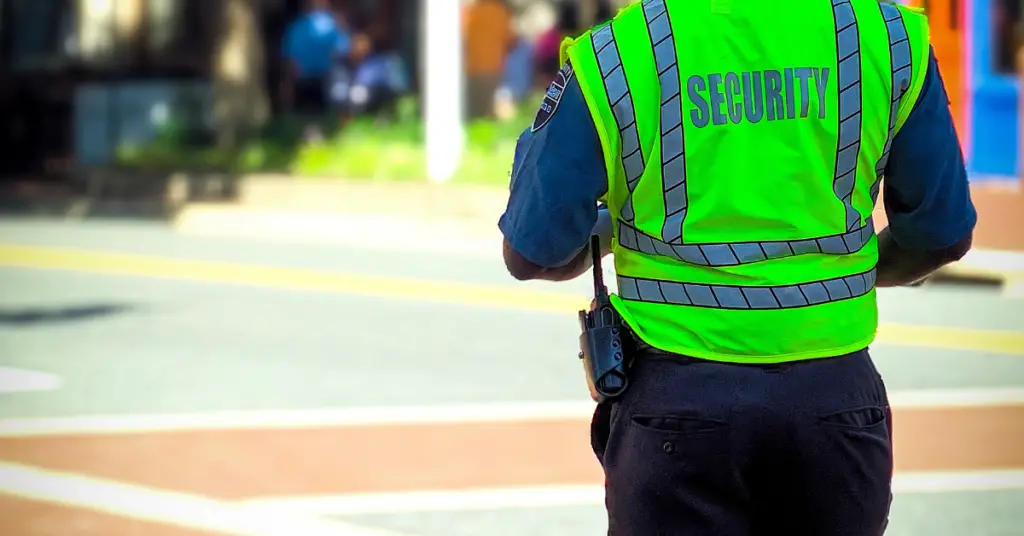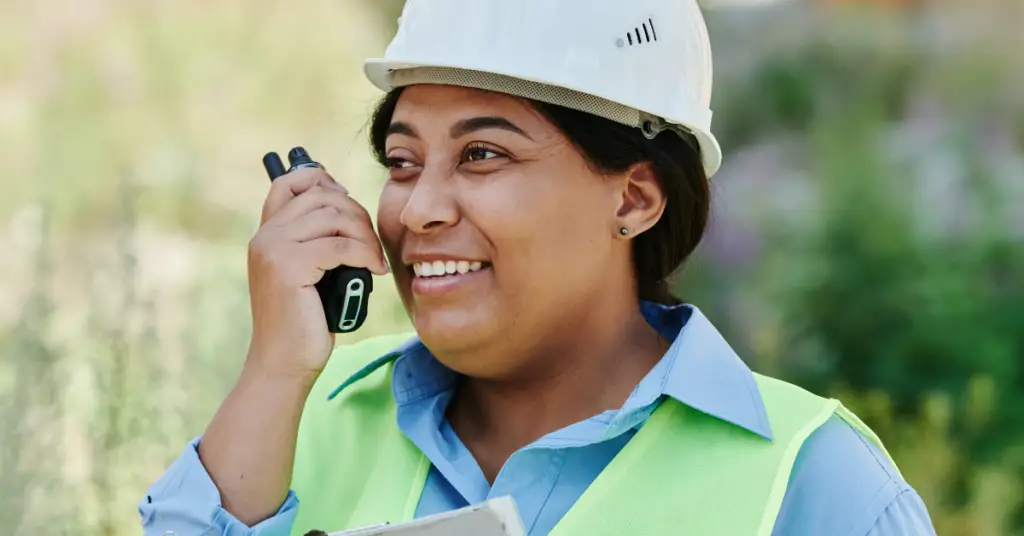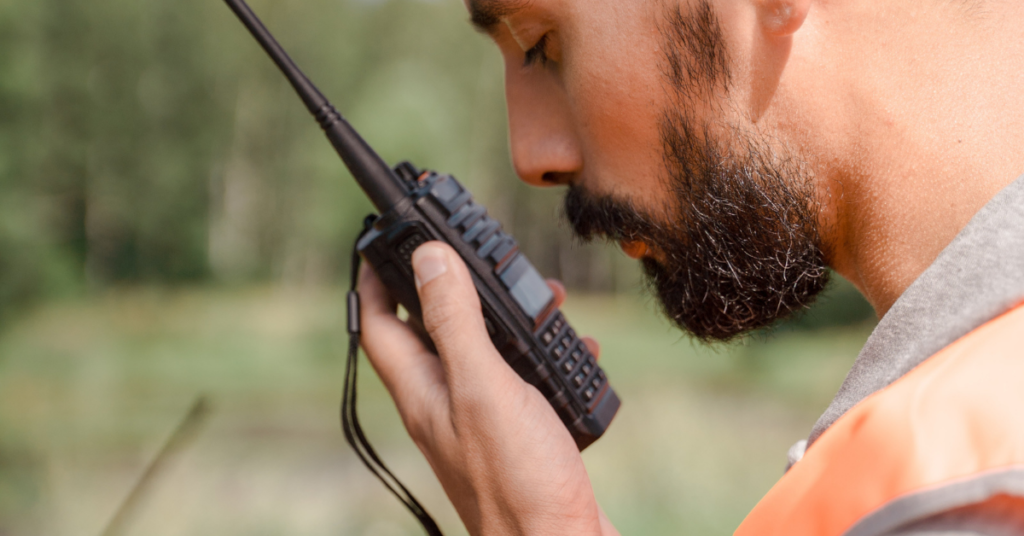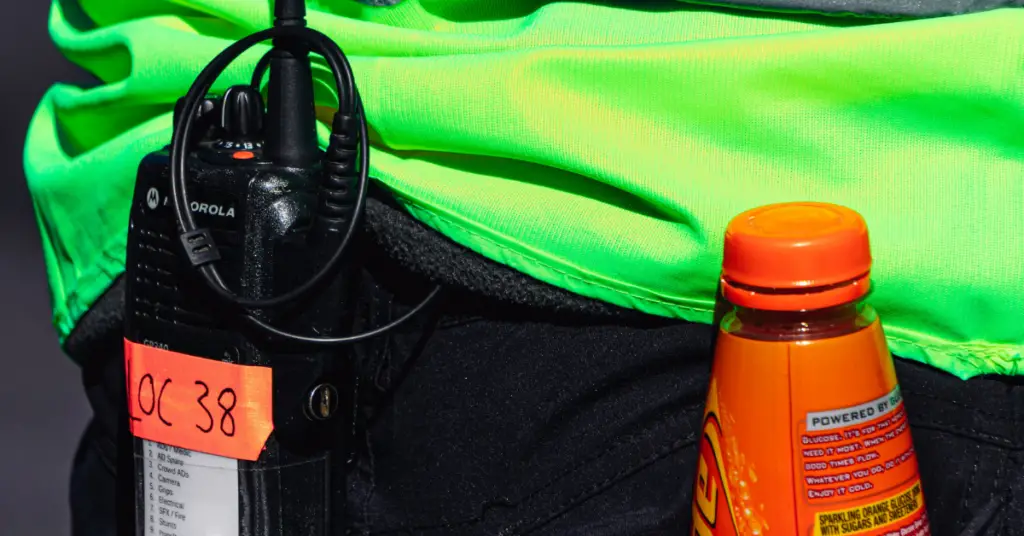Last updated on October 1st, 2024 at 07:17 pm
Here you will find a detailed guide on Walkie Talkie Lingo with Its uses, Purpose, Working, and many other important details.
Shorthand radio communication is the basis for walkie-talkie lingo. You must know a few select phrases to sound like a true pro when serving in two-way radio communication.
A walkie-talkie is an essential survival tool if you get lost in the wild or during natural disasters. It’s fun and easy to use. The device can be used to communicate using normal language or walkie-talkie lingo as long as it is within a transmission range.
Therefore, we strongly encourage you to obtain your walkie-talkie and radio and practice them so that you can use these words to relay messages to people quickly, even when cell phones are inoperative.

How does it work?
There are several types of walkie-talkie lingo, but it is a code language that reduces the length of sentences to make them more easily accessible. Long sentences get cut off when signals are poor, so it makes sense to reduce their length.
To transmit a message, everyone using the device should be on the same radio channel. When you speak with people using this device, you have to observe some radio etiquette.
When you know the common walkie-talkie codes, you will not have any trouble understanding two-way radio lingo. As a result of this article, you have the opportunity to learn most of the commonly used walkie-talkie codes.
What is the purpose of this lingo?
However, there are some common uses for walkie-talkies despite the lack of rules about who can speak them. These walkie-talkie phrases are in the walkie-talkie dictionary online, so you shouldn’t be surprised. Here are some other things walkie-talkies are good for.

It can be used for a variety of things, as you can see. Using these lingo terms can save lives and time when dealing with reports in person is difficult. For this reason, both law enforcement and the military use them.
What are the ten codes?
It is known that these codes were developed by the Illinois State Department in 1937 as a means to reduce ambiguity over radio transmissions. It is important to note that these codes may vary from department to department and that they are typically used by law enforcement agencies.
If you would like to use these walkie-talkie phrases, you will find a few of the codes listed below. They are all begin with the number 10 and then followed by random numbers to indicate their meaning.
Additionally, there are many other signals, such as “all units within range report” or “emergency traffic” and “negative contact,” but these are not always utilized by anyone other than the police.
Phrases that walkie-talkies use the most
Let’s now examine some other common phrases. To accomplish the urgent business of filming, a film crew uses these. I will give you a couple of examples.

Codes for walkie-talkies
By standardizing these codes, messages can be understood much more easily, more simply, and more clearly. Similarly, the phrases above are all standardized.
In all industries, common lingo differs, but its meaning remains the same. The core meaning of colloquial English remains the same, so no matter what industry you work in, you’ll understand it.
Using phrases such as “come in” or “over” is a standard way of indicating that you are present and that the message has been delivered. A simple and common phrase for individual conversations is, “go ahead”/”go for (name).
In summary, these are some examples of walkie-talkie codes that you can easily remember which are used before starting a walkie-talkie session, such as “mic check” or “initial check”. In addition to being fun, these are also useful in an emergency.
Advancing lingo examples
People who use walkie-talkies for business purposes are most likely to use this advanced lingo. This is commonly used on film sets.

As these have very clear meanings, they are only used by the crew on set.
Linguistics of the Film Set
On the internet, you can find a great deal of on-set slang. If you are interested in getting into this field, these are great tools for you.
Filmmaking crew lingo is used on many more sets, but these are specific to the film industry. Of course, if you’re interested in majoring in this area, this will be very useful.
Etiquette for using a walkie-talkie
You need to learn and follow some etiquette. A professional setting ignores etiquette as well as within a group of friends.
The first thing you should do is not to talk right away as you’re turning on the two-way radio, as you’re likely to miss some of the initial words.
Clear signals can take a while to come through. Consider what you want to say carefully before pressing the button because no one else can speak after you press the button.
Additionally, if there is more than one listener, ensure that you identify yourself. This will help avoid confusion and ensure that everyone knows who is speaking. Please identify yourself before speaking.
Also, make sure you directly address the message to the right person so that they know you’re talking to them.

When you wait for a response, be patient. You should also be the loudest, clearest, and most precise when delivering the message. Be concise and avoid using unnecessary words. You will usually know when the other person has understood the message too, so you will know whether to repeat it.
Please avoid accidentally hitting the “on” button because this can impede other people from speaking and can be embarrassing. Observation can teach you this, but you should still be cautious.
It is thus advisable that you learn etiquette before starting a job that requires you to use walkie-talkies and lingo.
The best way to talk clearly on a walkie talkie
Walkie-talkies transmit radio signals, as I already mentioned. There is a limit to the distance that radio signals transmit audio, but when the same word is heard at a distance, it becomes difficult for the listener to understand it.
They are interrupted by other radio signals. Talking on the walkie-talkie is very important, so make sure you’re very loud and clear.
Radio walkie-talkies are best used when done precisely and according to the correct procedure. Here are the steps that you need to make sure that you are using the walkie-talkie properly.
Turn on the mic
Before you start talking, be sure your microphone is on. Never cue up the mic while talking at the same time. That might not be a problem for you. Your walking partner on the other end wouldn’t be able to hear you.
Radio waves stabilize after the microphones are turned on. The other side can only hear your words after the microphones are turned on. Before starting to talk with your partner, make sure the mic is on.
By speaking slowly and correctly, try to sound calm
Make sure that you are speaking clearly when you use the walkie-talkie. Occasionally, words may be misunderstood on the other side of the line due to signal disturbance. Therefore, you should speak loudly and clearly.
Information needs to be transmitted at once during an emergency. Simply because someone has not heard it clearly, you cannot ask them to repeat it many times. If you want to prevent that from happening, speak slowly, and loudly and make sure that your words are coming out right from your mouth.
Listen silently to the signal
You do not have to speak only when you use a walkie-talkie. There are always two sides to a conversation, so listening carefully is very important. To achieve this you must wait patiently for the speaker to finish speaking before replying prominently.
Transmitting is now complete
Conversations should be ended as well as started. As soon as you are finished talking, you may end the call. Your last words may not be transmitted as a result. After completing a conversation, remove your finger from the button to prevent this from happening. Just to be sure that no words went unspoken or unheard.
CB radios vs. walkie-talkies
The walkie-talkie and CB radio are both good means of communicating with others, but which one is better? Since they use a line of sight, walkie-talkies are a smaller form of communication.
Walkie-talkies can only reach a limited distance, while CB radios can reach much farther. To help you decide which one is best for you, this article compares these two types of devices.
When you have a tight budget, walkie-talkies are your best bet. CB radios require an external antenna and are more expensive.
A walkie-talkie uses less power, has a greater range, and doesn’t require any other equipment. Cellular phone reception is often spotty or nonexistent in rural areas as well.
CB radios and walkie-talkies are very different. What are the differences between the two? CB radios can communicate over long distances, while walkie-talkies are two-way communication devices used close to the ground.
Depending on how they are intended to be used, both devices use different frequencies. CB Radios have lower frequencies, so they can transmit over a greater distance than walkie-talkies.
Consequently, walkie-talkies are a very popular product among hobbyists, construction workers, and outdoor enthusiasts who use them while on the job or while participating in a sport (such as hiking).
In addition, these same features impose a limit on the number of users of a particular channel at a given time and result in interference when multiple channels operate at the same time.
Communicating with other people can be achieved using walkie-talkies and CB radios. There is one major disadvantage of Walkie-Talkies over CB radios: range.
In comparison, CB radios can reach distances of 20 miles, while walkie-talkies reach distances of just two miles. CB radios are more complex devices, but walkie-talkies are much cheaper and have better reliability.
When you start a walkie-talkie, what do you say?
The first time you turn on your walkie-talkie, you should Your walkie-talkies will work when someone says “Good Check.”.know your walkie-talkie someone accidentally holds down the “talk” Somebody will catch it, and say “keying” or “someone’s keying.”. Whether they were walking or talking, they accidentally held down the “talk” button. It will be spotted by someone who will say “keying” or “keying is taking place.”
What does go for mean on a walkie-talkie?
When someone requests a radio check, a common response is to say “Loud and Clear.”. Tell the person you hear them when they call your name. The response should be more specific. The example below shows the words “Go for Charles.” – you are currently completing the task requested.
What does 104 mean on a walkie-talkie?
Charles Hopper, the Illinois State Police’s Chief of Communications, created the ten codes between 1937 and 1940 for use in radio communications among police officers. 10-4 is an affirmative signal that means “OK.” ISP Communications Director Charles Hopper created the codes between 1937 and 1940.
What does Roger mean by walkie-talkie?
To help prevent confusion among similarly spelled letters, a “spelling alphabet” (often mistakenly called a “phonetic alphabet”) is used in radio communication. Roger was “phonetic” for “R” (received and understood). Roger means “Received” in radio voice procedure, in the previous US spelling alphabet.
What does CTCSS mean on a walkie-talkie?
We have more features and functions in land-mobile-radio communication systems now than ever before. CTCSS, or Continuous Tone Coded Squelch System, is one of the most popular features in conventional radio.
Are walkie-talkies technology?
Handheld radios used for wireless communication with radio waves can communicate on a single frequency band using walkie-talkies. Canadian inventor Donald Higgs and American inventor Alfred Gross independently developed the first of them in the 1930s.
Conclusions
Police, ambulance dispatchers, emergency responders, and civilians can all use walkie-talkie-talk codes. A user can use these codes to communicate clearly and quickly with other parties, which will enable the user to get their message across clearly and promptly.
Similarly, if you join a hike, camp, or hunt with others, you will need to learn the walkie-talkie lingo to communicate clearly. The use of walkie-talkies can make communication challenging, so learning these terms is essential for success.
